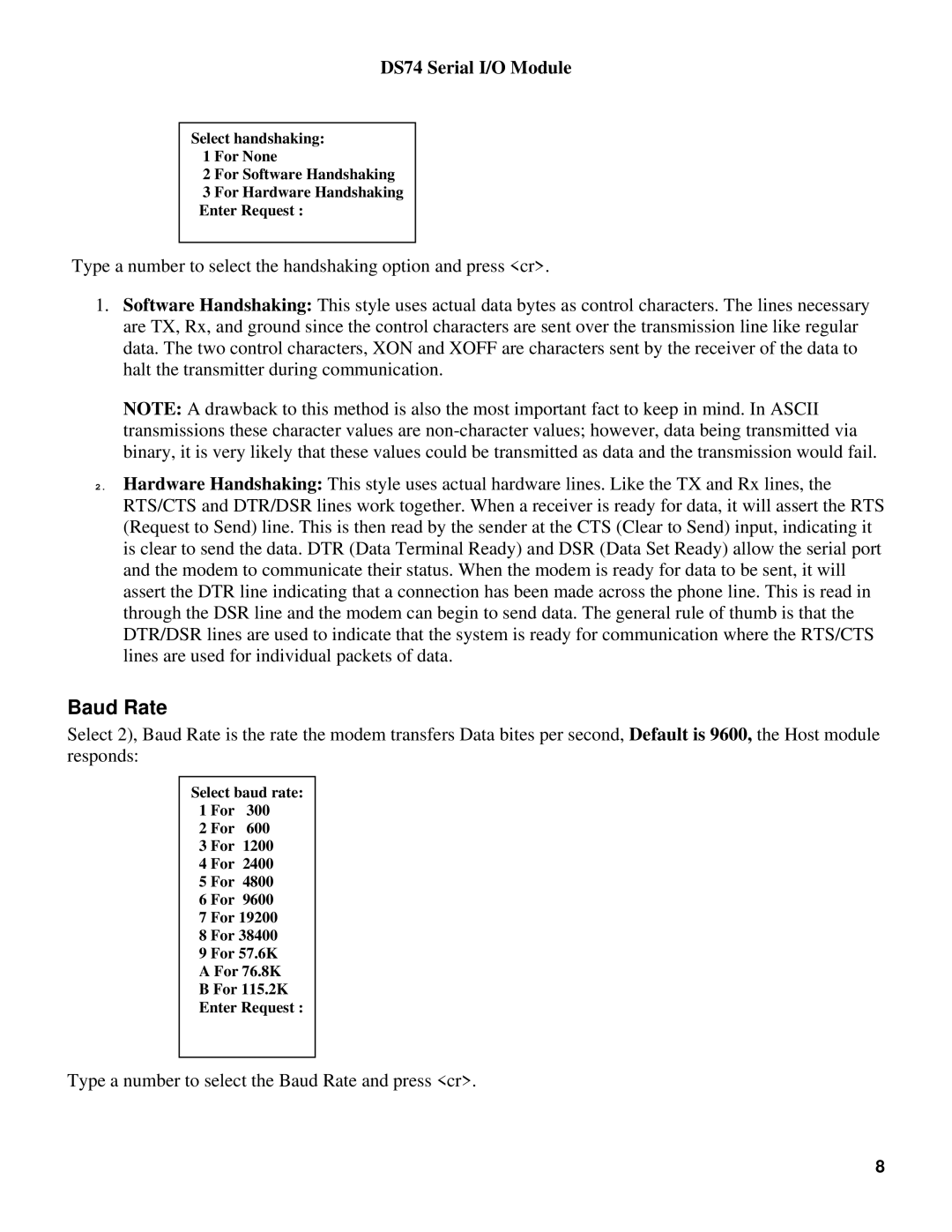
DS74 Serial I/O Module
Select handshaking: 1 For None
2 For Software Handshaking
3 For Hardware Handshaking Enter Request :
Type a number to select the handshaking option and press <cr>.
1.Software Handshaking: This style uses actual data bytes as control characters. The lines necessary are TX, Rx, and ground since the control characters are sent over the transmission line like regular data. The two control characters, XON and XOFF are characters sent by the receiver of the data to halt the transmitter during communication.
NOTE: A drawback to this method is also the most important fact to keep in mind. In ASCII transmissions these character values are
2.Hardware Handshaking: This style uses actual hardware lines. Like the TX and Rx lines, the RTS/CTS and DTR/DSR lines work together. When a receiver is ready for data, it will assert the RTS (Request to Send) line. This is then read by the sender at the CTS (Clear to Send) input, indicating it is clear to send the data. DTR (Data Terminal Ready) and DSR (Data Set Ready) allow the serial port and the modem to communicate their status. When the modem is ready for data to be sent, it will assert the DTR line indicating that a connection has been made across the phone line. This is read in through the DSR line and the modem can begin to send data. The general rule of thumb is that the DTR/DSR lines are used to indicate that the system is ready for communication where the RTS/CTS lines are used for individual packets of data.
Baud Rate
Select 2), Baud Rate is the rate the modem transfers Data bites per second, Default is 9600, the Host module responds:
Select baud rate: 1 For 300
2 For 600
3 For 1200
4 For 2400
5 For 4800
6 For 9600
7 For 19200
8 For 38400
9 For 57.6K
A For 76.8K
B For 115.2K Enter Request :
Type a number to select the Baud Rate and press <cr>.
8
